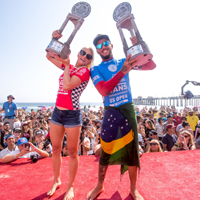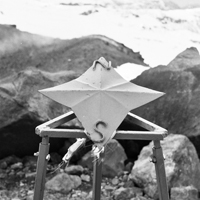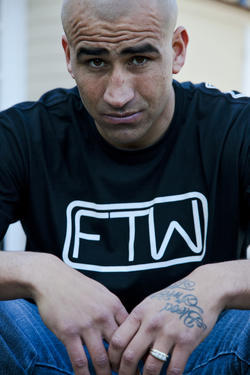
In the past few years it seems we’ve been writing more and more about the sport of surfing and not necessarily because of its soulful nature and attraction among youth culture, but because of the complex business issues surrounding the industry. Now, hitting mainstream Los Angeles this week, a poignant article by Tibby Rothman was released in the LA Weekly, “Bobby Martinez—Rebel Cry—Surfing’s Elite Latino Star Questions the Soul of the World Tour” which brings to light yet again troubling situations around the sport.
Bobby Martinez was banned from the Association of Surfing Professionals (ASP) World Tour this past fall during the Long Beach, Long Island, NY ASP World Tour stop called the Quiksilver NYC Pro for causing “damage” to the sport’s image based on a gnarly interview he gave after his session. Before the interview, he warned that this would not be a good idea and stated he didn’t want to do an interview, but the media pressed on.
What they got was a complete rip on the ASP World Tour and professional surfing in general with several f-bombs dropped throughout. He likened the tour to a “tennis tour” and swore that surfing was going down the drain thanks to sponsors and the brands in the industry.
What was once considered a rebel sport of youth culture had over the years, turned into something completely tame and well, lame, when it came to the professional side of the sport.
Among the top complaints, and not only among Bobby, was the tour’s rolling world ranking system which was adopted in 2011, meaning that the tour’s top 34 surfers could be outranked by competitors who never surfed against them because at the mid-way point, based on how many points a surfer had, they could be dropped and replaced with another surfer.
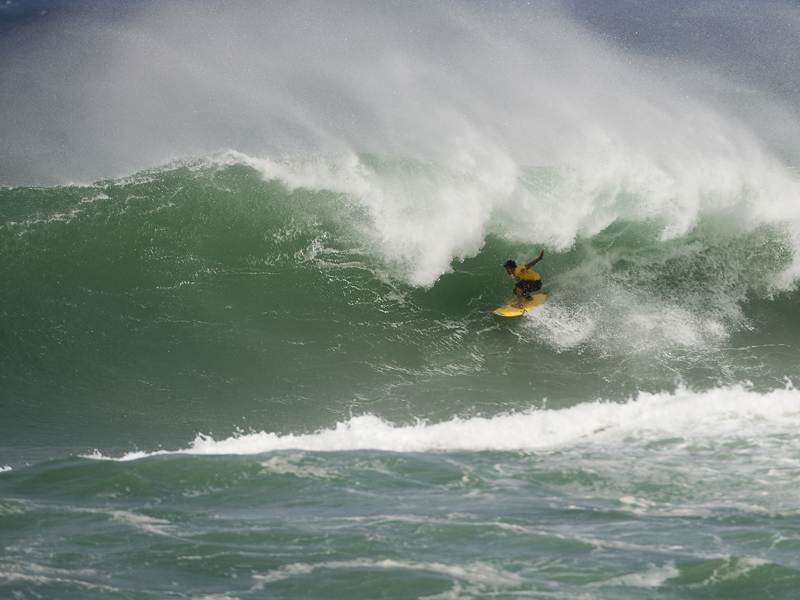
The idea was to bring more new younger surfers into the spotlight, towards making the sport more interesting. This is a similar pattern to what professional tennis does. However, for a sport like surfing, where the “playing field” is waves in very diverse conditions, vs. a controlled environment like a tennis court, it doesn’t work. Dudes who don’t necessarily rule on smaller waves during a part of the year may get cut in the second half when monster waves at competitions like Teahupoo, Tahiti come around which may be what they dominate in.
Surfers complained, but as the LA Weekly story points out, with the ASP board being made of surfers and their sponsors who basically are sitting across the table at an ASP board meeting, it’s difficult to voice one’s true opinion without pissing off the sponsors—who also happen to be the ones that put on the events.
There are several reasons why Bobby was someone to listen to, however. First, he’s an amazing surfer, ranked in the top rankings of professional surfers for years, had beaten Kelly Slater before, and won Teahupoo, Tahiti in the past—a thick barrel of a wave known to take down top surfers in a heartbeat. He was a bit of an outsider though since he came from Santa Barbara, and his agent Bryan Taylor put it, “He never drank the Orange County Kool-Aid.” He was also Latino in a sport that is predominately made up of Caucasian mainlanders, Hawaiians, and Australians.
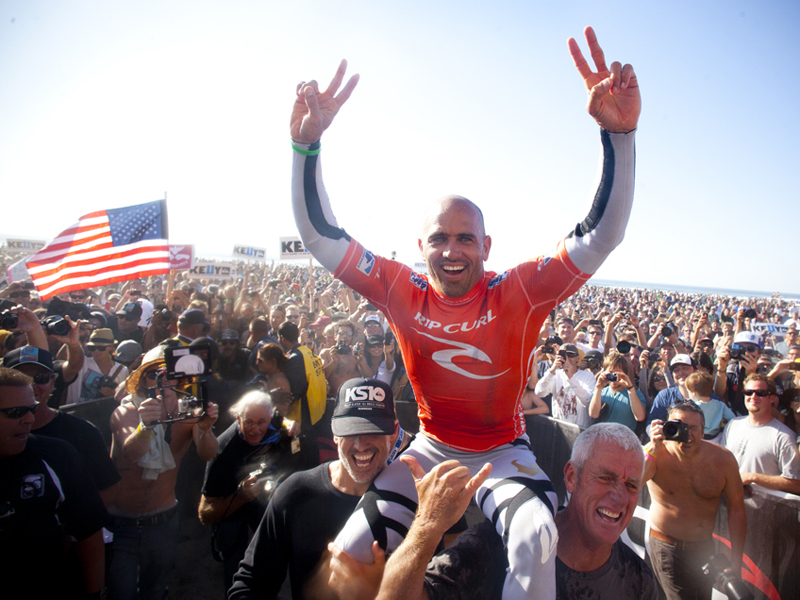
The ASP World Tour ranking system is so complex that many surfers are confused when it comes to the points system, and which events carry what amount of points. It was so bad that the CEO of ASP, Brodie Carr, resigned last year for messing up the points and awarding Kelly Slater his 11th World Tour Title before he actually won (he had one more heat to go, which he did end up winning).
What’s more, the ASP World Tour and sponsors which control the events made a big push over the last year to try and get more mainstream attention to the sport, which often takes place in far away locations. But this move proved to raise even more concern, as we wrote about last year during the Rip Curl Pro in Ocean Beach, San Francisco, when surfer Dusty Payne had a near run in with a shark and left the water in mid-competition. In an interview on Grind TV, Payne said, it was “the biggest fin I’ve ever seen in my life coming at me.” Just a few days previous, there was a shark attack in nearby Monterey. Overall, the area is known for sharks during the Fall, which had made many people question why the ASP chose this location for an event at that time. There had been speculation in general about more ASP surfing events, the so-called “Dream Tour” being in places that are not necessarily dreamlike, such as Long Beach, NYC, and Ocean Beach, San Francisco. Clearly there’s a move to host events near large population centers, thus attracting more people and sponsorship recognition.
There’s a reason for this. The surfing industry has grown from small grassroots shops and brands, into huge corporate giants. As LA Weekly points out, Quiksilver owns the Roxy and DC Shoe labels; Nike owns…Nike 6.0 and Hurley; and multinational French holding company PPR—headed by Francois-Henri Pinault and owner of Gucci and Yves Saint Laurent—owns Volcom. Contests on the World Tour are not financed by owners like many other sports, but by sponsors.
On the one hand, it’s great that these top brands, including Quiksilver, Billabong, Rip Curl, Hurley, Volcom, and Reef help the sport by sponsoring events and surfers. However the industry is completely incestuous. Jonathan Paskowitz, president of Lightning Bolt based in Venice, CA put it well. “I ran a company called Black Flys for years in Costa Mesa, which is right down the street from Hurley, which is right down the street from Quiksilver, which is right down the street from O’Neill. It’s this big, nepotistic group of industry individuals that all hang out together and work together.”
You can also see this with SIMA—Surf Industry Manufacturers Association. SIMA has done some great things for the industry, but on the other hand, it weighed heavily on ASR, the original action sports trade show that ended up folding in November, 2011. Some say that the big manufacturers, most of whom make up the decision-making at SIMA made it difficult for smaller surf-related brands to make it in their industry. There was also a growing divide between skate and surf at ASR which was never quite reconciled and if anything grew larger to the point where skate brands started their own smaller trade shows outside, literally, during ASR. (Do a keyword search on ASR at Label Networks for more.)
As Matt Warshaw wrote in Surfer Magazine in an article called “Waking from the Dream,” “…the changes on this year’s schedule have me wondering if the whole “Dream Tour” concept needs to be retired, too. Quiksilver proved that it can still swing for the fences, promo-wise, by staking a record-breaking million-dollar purse for its debut Quiksilver Pro New York contest this September—but make it ten million, and it doesn’t change the fact that Long Island isn’t anybody’s idea of a dream surf destination.
“ASP officials—or rather, the Big Four surf companies who run the show—are again courting the Lollapalooza-style beachfront megacrowd, hoping, as always, to nudge pro surfing’s marker a space or two forward on the Chutes and Ladders gameboard of mainstream acceptance. You don’t go to New York to ride waves. You go to get rich and famous. Quiksilver CEO Bob McKnight isn’t even pretending that his new contest is about good surf. The point of the exercise, he says, is to take the sport to the “largest media arena in the world.” And the focus won’t just be on surfing, but “skate, BMX, fashion, art and music”—meaning a village-sized aggregation of tents, booths, ramps, stages, speakers, video screens, and food concessions—which in turn will bring “incredible global attention to the action sports culture and lifestyle.” This is how you talk to the regional buyer for Macy’s, not the coffee-reeking guy hunched over his computer at night watching the semifinals at J-Bay. You know what “action sports culture and lifestyle” means to that guy? What it means to me? Chest-high and blown out.”
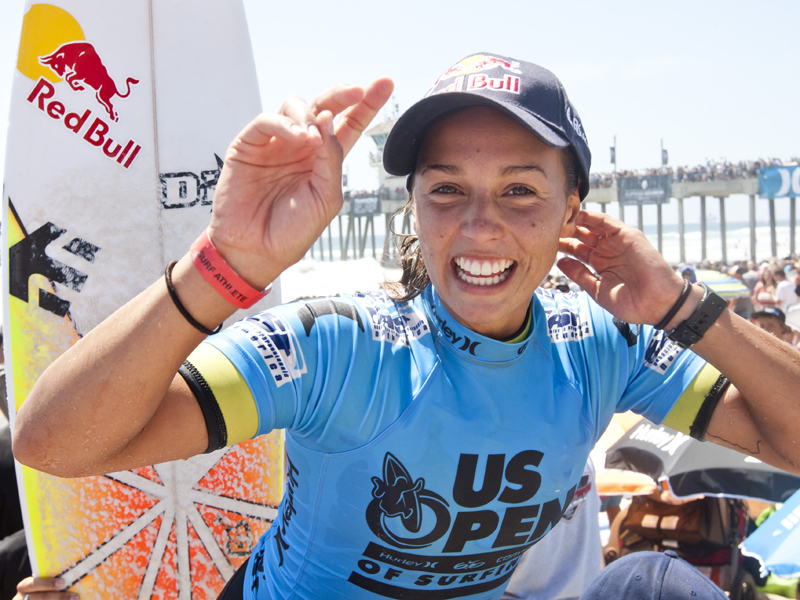
That being said, as more mega-events are trying to happen in surfing (see also our story on the Nike U.S. Open in Huntington Beach), women’s professional surfing is struggling to find sponsorship and therefore canceling events—there was no Vans Triple Crown for them in 2011.
The difficult economy had especially effected women’s professional surfing with lack of sponsorship dollars and continued lower prize money compared with the men’s purses at all of the events in 2011. Although lower purses for top pro women surfers is nothing new in surfing, it pales in comparison to other professional sports, especially, for example, snowboarding where prize money has usually been equal for males and females due to the sponsors, especially brands such as Burton which has always seen women competitors just as vital to the longevity and progress of the sport.
The issue hit the limelight again during the Nike U.S. Open of Surfing when Kelly Slater won a grand total of $100,000, to Sally Fitzgibbon’s $50,000. If it wasn’t for the fact that I attended the awards ceremony, discovering exactly how much Sally won took some serious research to find as most surf media failed to reveal surfing’s dirty little secret of ongoing inequity in prize money.
Ironically, when it comes to revenue in this industry, most comes from the lifestyle around surfing, including apparel, footwear, and accessories which is due in large part to the women in the sport—and those that buy the fashion who are inspired to be surfers. In our Fall Youth Culture Study 2011, our special section on Action Sports reveals that for the 8th year in a row, more females ages 13-25-years old want to learn surfing than males in the same age group. This aspirational quality of the sport remains a huge market potential and many top surf manufacturers have tapped into this quite successfully (i.e., Roxy boosts Quiksilver’s revenues every time).
However Quiksilver posted the largest purse for a surfing event ever at $1 million for the newly organized Quiksilver NYC Pro on Long Beach, Long Island last August—the very one featuring Bobby Martinez’s blasting interview. Unfortunately, there wasn’t a women’s division. Which raised the question, if the ante has been upped for prize money for men’s pro surfing, where were the dollars for the women pros? And how detrimental is it to the long-term health of the industry if women’s pro surfing events are limited or canceled when clearly more young women are inspired by surfing than young men?
This isn’t a case of picking on Quiksilver. As we mentioned, Nike U.S. Open offered half the prize money for the women pros surfing the exact same wave. And for the Vans Triple Crown, one has to question the sponsors’ Vans, Reef, and Billabong.
Just when everyone thought that Quiksilver was doing well, with revenue increases of 10% in the fourth quarter of 2011 to $545.2 million compared with $495.1 million in the fourth quarter in 2010 (due in big part to Roxy), they announced that they would not be hosting the Long Beach Quiksilver Pro in 2013. Hurricane Irene coming through didn’t help the situation in terms of high costs last year, but even without Mother Nature, Quiksilver decided not to do the event.
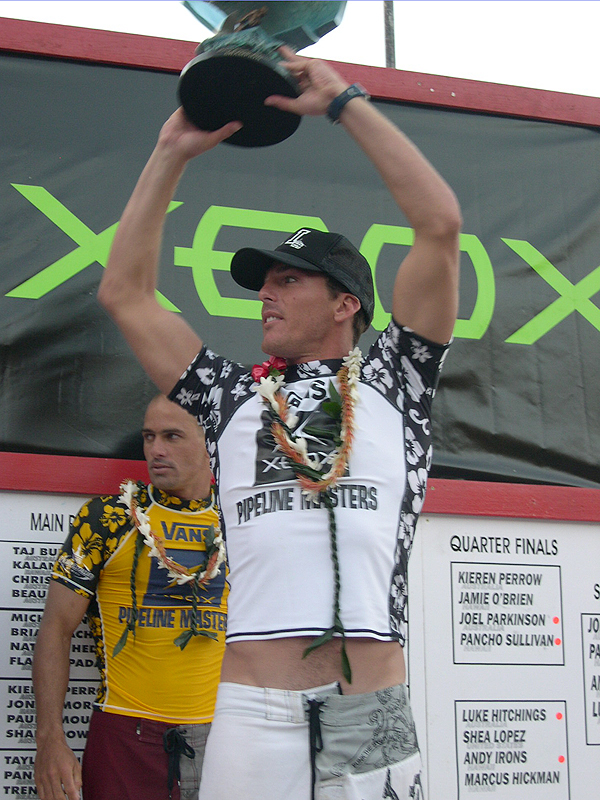
Which brings us back to the surfers. While the fate of Bobby Martinez getting booted off the World Tour is sad (yet brings up bigger issues to be resolved) especially given his talent, the saddest story in the sport of surfing was when 3-time ASP World Surfing Champion Andy Irons died on November 2, 2010, due to a heart attack and drugs. Three different statements were released on June 8 in 2011, including two different autopsy reports in one last week and a number of well-research stories on the case.
While we chose to run the press release from the Iron’s family out of respect, we did bring up the points we made earlier in a previous story about what this all really means, including the incredibly troubling amount of secrecy surrounding drug and alcohol abuse in the sport of surfing, which is rarely ever talked about and certainly never covered in surfing media.
The fact that the first in-depth story about the dark side called “Last Drop” was written in Outsideonline.com and not from core media such as Surfer or Surfing goes to show the nepotism within this sport. To that point, we have to say that Surfer did run both autopsy reports, a link to a New York Times article, and the Iron’s Family statement towards providing several different angles.
Ever since Andy was pronounced dead, people started to question what sort of responsibility his main sponsors may have had as well: Why was he left alone? If he was sick, where were his people? What sort of responsibility do sponsors have when it comes to helping clean up their athlete and does keeping such a problem hidden actually hurt the industry more than it helps as others with problems go undiscovered and issues are masked rather than dealt with?
Since this time, we’ve heard that there will be some sort of drug screening implemented in future surf tours, similar to other top professional sporting competitions. In addition, on December 27, 2011, the ASP dropped the mid-season cut-off rotation system—the very thing Martinez was rallying about.
As for women’s professional surfing, there’s a market opportunity just waiting to be had, but that will clearly have to come from “outside” the industry.
Surfing is going through its own “Arab Spring” right now with surfers speaking up and questioning the status quo of professional contests and who runs them. The transition is underway. Maybe the reality is that surf contests aren’t ever going to be the next big Super Bowl. As the LA Weekly put it, for many surfers, it’s an art of competition that’s about man-upon-wave, not man-versus-man. For many surfers, it’s a deeply metaphysical act that connects man to water—not exactly a stadium sport. For a sport that has so much soul, maybe that’s not such a bad thing?
Except for the sponsors.

